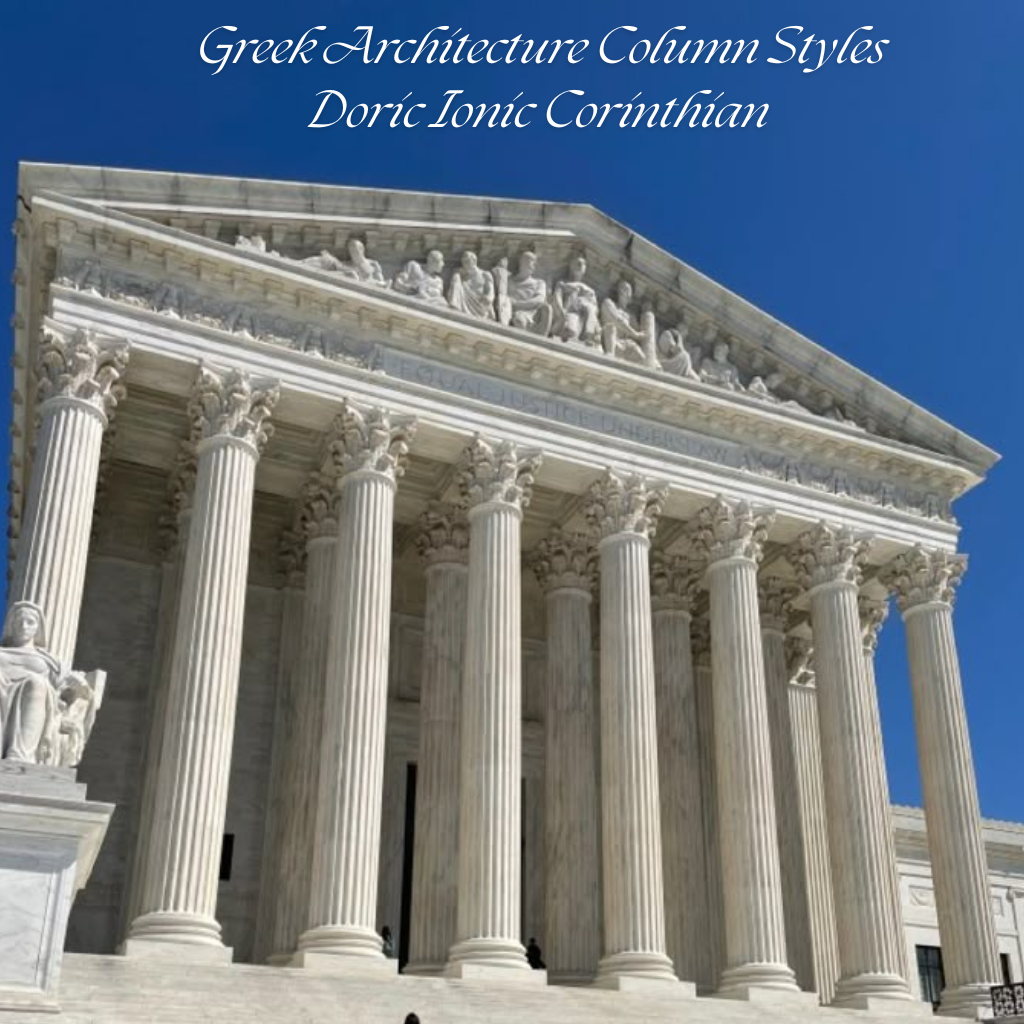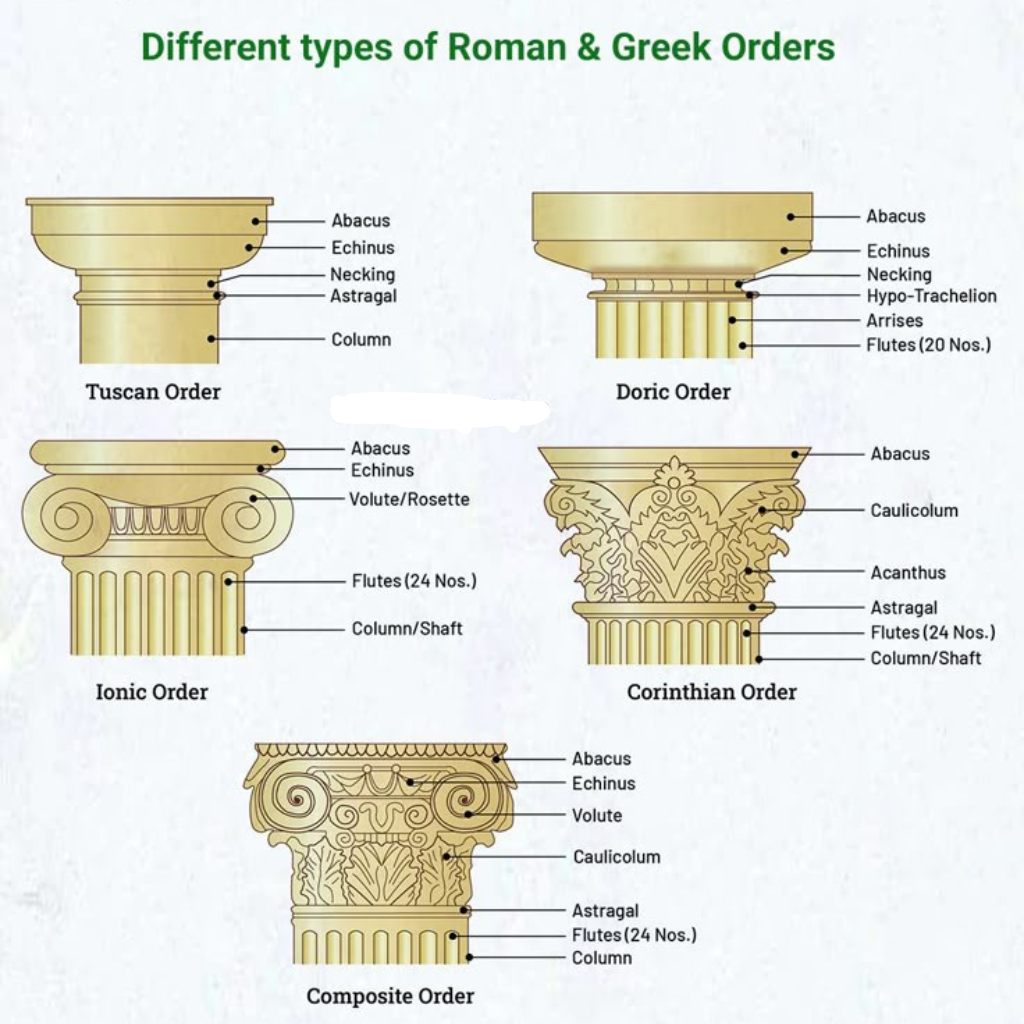Greek Architecture:- A Timeless Legacy of Art and Engineering
Greek architecture is the source of immense achievement for our ancient architects and designers. It is one of the most influential and revered architectural styles in our history, characterized by simplicity, proportion, perspective, and perfect harmony. Greek architecture includes some of the finest and most distinctive buildings, such as temples, theaters, and stadiums. Originating in ancient Greece around the eighth century BC, Greek architecture has left an indelible mark on building construction, art, and culture. Its principles of symmetry, proportion, and harmony continue to inspire architects and designers worldwide.
In this article, we will explore the history, characteristics, styles, and legacy of Greek architecture in detail.

History of Greek Architecture
Greek architecture has evolved over centuries, influenced by cultural, religious, and social factors. This architecture holds special significance in world culture. It can be divided into three main periods: Archaic (800-500 BC), Classical (500-323 BC), and Hellenistic (323-31 BC).
- Archaic Period:- This period marked the beginning of monumental architecture, with temples primarily constructed of wood and mud bricks. Wood was gradually replaced by stone, allowing for the construction of permanent structures.
- Classical Period:- The Classical Period is considered the golden age of Greek architecture. Architects perfected the use of columns, proportional design, and decorative elements. Temples like the Parthenon were built during this period.
- Hellenistic Period:- During this period, Greek architecture became more elaborate and grand, featuring dramatic designs and ornate details. Its influence spread beyond Greece, affecting the architecture of the Mediterranean and the Near East.
Thus began the historical era of Greek architecture, the Classical period.
Key Features of Greek Architecture
The architecture is renowned for its order, symmetry, and grandeur. Some of its distinctive features are as follows:-
1. Columns:- Columns are the most iconic element of Greek architecture. There are three main types:-
- Doric:- Simple, strong, and unadorned. Example: The Parthenon in Athens.
- Ionic:- Slender, with scroll-like decorations (volutes) at the top. Example: The Temple of Athena Nike.
- Corinthian:– Elaborate designs with acanthus leaves at the top. Example: The Temple of Olympian Zeus.
2. Entablature:- The horizontal structure supported by columns, consisting of architraves, friezes, and cornices. The friezes often feature decorative statues and carvings depicting myths and historical events.
3. Proportion:- Greek architects always emphasized mathematical precision. The golden ratio was often used to achieve perfect symmetry and balance in buildings.
4. Temples:- Temples were the centerpiece of Greek architecture, serving as places of worship for gods and goddesses. Most temples were rectangular and had a row of columns surrounding the structure.
5. Altars and Statues:- The entrance was often decorated with triangular altars, often containing intricate sculptures depicting mythological scenes.
6. Use of Marble:- The Greeks favored marble for its durability and aesthetic appeal. Marble temples, statues, and columns became hallmarks of Greek architecture.

Types of Greek Architectural Structures
Greek architecture included a variety of structures besides temples, including:-
- Theatres:- Greek theaters were semicircular, open-air structures used for performances and ceremonies. The Theater of Epidaurus is a prime example of acoustic and architectural excellence.
- Agoras:- Agoras were public spaces or marketplaces where citizens gathered for social, political, and commercial activities. This architectural design consisted of colonnaded walkways and open courtyards.
- Stoas:- These were colonnaded covered walkways or porches, often used for public gatherings, shops, or meeting areas.
- Stadiums and Gymnasiums:- The Greeks built stadiums and gymnasiums for sports and physical training, reflecting the cultural importance of athletics in Greek society.
Greek Architectural Orders
It is classified into three main orders, each with its own unique style and characteristics:-
1. Doric Order:
- Strong and plain columns without bases.
- Simple capital designs.
- Heavy and solid forms.
2. Ionic Order:
- Slender columns with bases.
- Cops adorned with scroll-like curved shapes.
Elegant and refined forms.
3. Corinthian Order:
- Elaborate and decorative capitals adorned with acanthus leaves.
- Tall and slender columns.
- Used primarily in the Hellenistic and Roman periods.
Influence of Greek Architecture
Greek architecture had a profound influence on global architecture, especially during the Renaissance and Neoclassical periods, where architects admired Greek design for its harmony, proportion, and elegance.
1.Roman Architecture:- Roman architecture adopted Greek styles and incorporated them into their temples, amphitheaters, and public buildings.
2. Modern Architecture:- Today, many government buildings, museums, and monuments draw inspiration from Greek temples and columns. The US Capitol and the British Museum are prime examples of neoclassical architecture influenced by Greek styles.

Greek Architecture in Modern Design
Even today, architecture continues to inspire architects, interior designers, and landscape architects. Its modern adaptations include:-
- Columned facades in public buildings
- Symmetrical layouts in urban planning
- Use of marble and stone for aesthetic appeal
- Open courtyards and theatrical spaces
Its emphasis on proportion, balance, and beauty ensures that the principles of Greek architecture remain relevant in contemporary design.
Famous Examples of Greek Architecture
Here we include information about some of the most iconic architectural masterpieces:-
- Parthenon, Athens:- A temple dedicated to Athena, featuring Doric columns and intricate sculptures.
- Temple of Hephaestus, Athens:- A well-preserved Doric temple showcasing classical Greek grandeur.
- Temple of Olympian Zeus, Athens:- A magnificent Corinthian temple built over centuries.
- Theatre of Epidaurus:- Famous for its excellent acoustics and circular seating arrangement.

Conclusion
Greek architecture is a testament to the creativity, engineering prowess, and cultural sophistication of ancient Greece. Its principles of symmetry, proportion, and artistic detailing have influenced architecture around the world. From massive temples to magnificent theaters, Greek architecture embodies the ideals of beauty, utility, and harmony.
Whether you are an architecture enthusiast, designer, or student, studying Greek architecture provides valuable insights into structural innovation, artistic expression, and timeless design principles.
